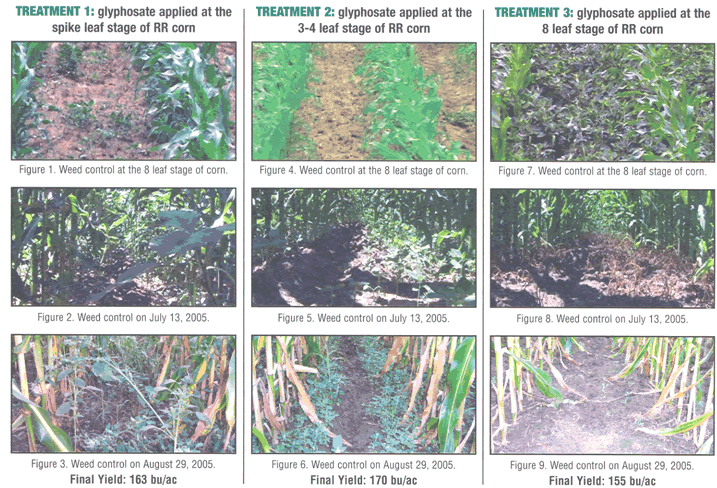
Most growers are aware of the importance of timing in weed control. In fact, timing of weed control is the most important management tool that growers have to ensure crop yield losses are minimized and that weed control is adequate. Weed management strategies should aim to eliminate competition between the weeds and the corn crop while the corn is between the 3rd 8th leaf stage. With broad spectrum weed control options available right up to the 8th leaf stage, one might assume timing is less of an issue in herbicide tolerant corn.
It is speculated that more corn acres will be grown to "Roundup Ready (RR)" hybrids in 2006 and logically glyphosate, a non-selective, non residual and inexpensive herbicide will be used to manage weeds where those hybrids are planted. It is often tempting with RR hybrids to delay applications such that the majority of weeds have emerged and allow for a single application of glyphosate to provide spotless weed control. If the field has perfect weed control at harvest, surely the yield impact of weeds must have been minimal?! Not so, and a demonstration trial at the FarmSmart Farming Systems Expo in 2005 clearly illustrated the importance of timing to maximize yield, rather than maximize the level of weed control at harvest.

Key Findings:
| * | Keeping a corn crop weed-free during the critical period (Le. 3 to 8 leaf stage of corn) resulted in the highest yield |
| * | It is better to err on the side of being too early than too late |
| * | To minimize weed seed return, glyphosate may need to be tank-mixed with a residual herbicide (Le. atrazine or Marksman) or applied twice |
| * | A clean field at harvest did not equate to the highest yielding treatment |